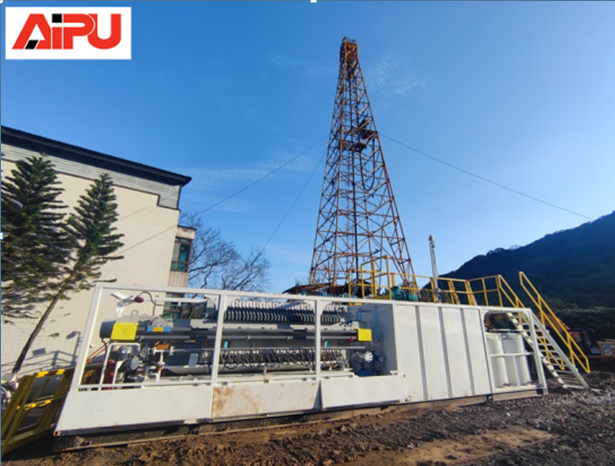The oil and gas industry has long recognized the importance of efficient drilling operations. A key factor in achieving this is the implementation of a high - quality solids control system. This system plays a crucial role in transforming drilling from being merely good to truly great.
Understanding Solids Control Systems
Solids control systems are designed to separate and remove unwanted solid particles from the drilling fluid, also known as mud. The drilling fluid serves multiple purposes, such as cooling and lubricating the drill bit, carrying cuttings to the surface, and maintaining wellbore stability. However, as drilling progresses, the fluid accumulates solid particles, which can negatively impact its performance. A solids control system typically consists of several components, including shale shakers, desanders, desilters, and centrifuges. Each of these components has a specific function in the solids removal process.
Benefits of Implementing Solids Control Systems
One of the primary benefits of a solids control system is improved drilling efficiency. By removing solid particles from the drilling fluid, the system helps to maintain the fluid's rheological properties. This means that the fluid can more effectively carry cuttings to the surface, reducing the risk of bit balling and other drilling problems. As a result, the drilling process can proceed more smoothly and at a faster pace, saving both time and money.
Another significant advantage is enhanced environmental protection. Uncontrolled solid waste from drilling operations can contaminate soil and water sources. A solids control system helps to minimize the amount of waste generated by separating and recovering the drilling fluid. This not only reduces the environmental impact but also allows for the reuse of the fluid, which is a more sustainable approach.
Advanced Technologies in Solids Control
The field of solids control has seen significant technological advancements in recent years. For example, modern shale shakers are equipped with high - frequency vibrating screens that can more effectively separate fine particles from the drilling fluid. Additionally, new centrifuge designs offer improved separation efficiency and can handle a wider range of particle sizes. These technological improvements have made solids control systems more reliable and effective than ever before.
Automation is also playing an increasingly important role in solids control. Automated systems can monitor and adjust the operation of the various components in real - time, ensuring optimal performance. This reduces the need for manual intervention and improves the overall accuracy of the solids removal process.
Future Outlook for Solids Control Systems
Looking ahead, the demand for more efficient and environmentally friendly solids control systems is expected to grow. As the oil and gas industry continues to explore more challenging drilling environments, such as deep - water and unconventional reservoirs, the need for advanced solids control solutions will become even more critical. Research and development efforts are likely to focus on further improving the separation efficiency, reducing energy consumption, and enhancing the overall reliability of these systems. With continued innovation, solids control systems will continue to play a vital role in transforming drilling operations from good to great.

Understanding Solids Control Systems
Solids control systems are designed to separate and remove unwanted solid particles from the drilling fluid, also known as mud. The drilling fluid serves multiple purposes, such as cooling and lubricating the drill bit, carrying cuttings to the surface, and maintaining wellbore stability. However, as drilling progresses, the fluid accumulates solid particles, which can negatively impact its performance. A solids control system typically consists of several components, including shale shakers, desanders, desilters, and centrifuges. Each of these components has a specific function in the solids removal process.
Benefits of Implementing Solids Control Systems
One of the primary benefits of a solids control system is improved drilling efficiency. By removing solid particles from the drilling fluid, the system helps to maintain the fluid's rheological properties. This means that the fluid can more effectively carry cuttings to the surface, reducing the risk of bit balling and other drilling problems. As a result, the drilling process can proceed more smoothly and at a faster pace, saving both time and money.
Another significant advantage is enhanced environmental protection. Uncontrolled solid waste from drilling operations can contaminate soil and water sources. A solids control system helps to minimize the amount of waste generated by separating and recovering the drilling fluid. This not only reduces the environmental impact but also allows for the reuse of the fluid, which is a more sustainable approach.
Advanced Technologies in Solids Control
The field of solids control has seen significant technological advancements in recent years. For example, modern shale shakers are equipped with high - frequency vibrating screens that can more effectively separate fine particles from the drilling fluid. Additionally, new centrifuge designs offer improved separation efficiency and can handle a wider range of particle sizes. These technological improvements have made solids control systems more reliable and effective than ever before.
Automation is also playing an increasingly important role in solids control. Automated systems can monitor and adjust the operation of the various components in real - time, ensuring optimal performance. This reduces the need for manual intervention and improves the overall accuracy of the solids removal process.
Future Outlook for Solids Control Systems
Looking ahead, the demand for more efficient and environmentally friendly solids control systems is expected to grow. As the oil and gas industry continues to explore more challenging drilling environments, such as deep - water and unconventional reservoirs, the need for advanced solids control solutions will become even more critical. Research and development efforts are likely to focus on further improving the separation efficiency, reducing energy consumption, and enhancing the overall reliability of these systems. With continued innovation, solids control systems will continue to play a vital role in transforming drilling operations from good to great.



